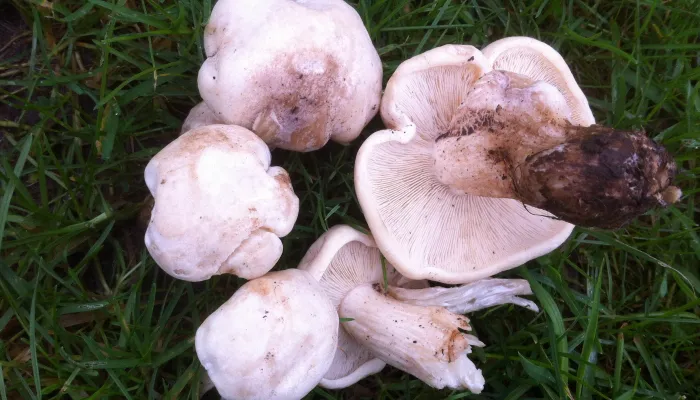| Statistics | |
|---|---|
| Cap diameter: | 5cm - 15cm |
| Stem height: | up to 5cm |
A lovely pale cream colour to begin with these stout mushrooms begin to turn a buff colour and the cap surface will crack as they age.
About
No surprise as to where this mushroom gets its name from, as this spring specialist traditionally appears on St Georges day each year! Although fungi can be found all the year-round, this is the first traditional mushroom (the type that grows out of the ground) to start showing itself across the country, hailing the start of the season proper. The St George's mushroom can also be found in urban settings including roadsides, where they sometimes strike up a relationship with hawthorn.
How to identify
A lovely pale cream colour to begin with, as these stout mushrooms age they begin to turn a buff colour and the cap surface will begin to crack. If you stumble upon a small troop, take a step back as you may find that they're part of a much larger 'fairy ring'. These circles can grow many metres wide, and will usually re-appear in the same spot each year. If you pick one to investigate, take a look underneath and you'll see their gills are very crowded. Finally, take a great big sniff. Their smell is described as 'mealy', resembling the odour of wet flour, and for this particular mushroom, quite often cucumber too!
Did you know?
The St George's mushroom's arrival appears to be significant in other European countries too. In Italy it is known as Marzolino (the March mushroom), and in Germany, Maipilz (the May Mushroom).

